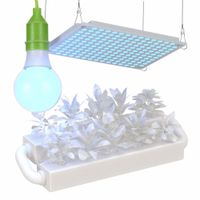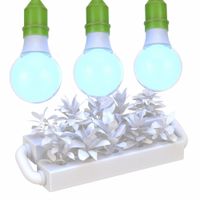- Home
- Lighting
- Lighting Fixtures Retrofit Kits
- Grow Lights For Indoor Plants
- Led Grow Light Kits
LED Grow Light Kits
Grow light kits include fixtures with LED bulbs or built-in arrays to set up a new installation or add onto an existing one. LEDs use less energy than other lighting technologies and run cool so lights can be placed within inches of plants without causing wilt or burn. Single-style kits include fixt .....Read More
Frequently Asked Questions
What are the benefits of using LED grow lights over traditional lighting?
How do I choose the right grow light kit for my plants?
What is the difference between single-style and multiple-style grow light kits?
How close should LED grow lights be placed to plants?
Can LED grow lights be used for all stages of plant growth?
Are LED grow lights energy-efficient and cost-effective?
How do I install and maintain a grow light kit?

